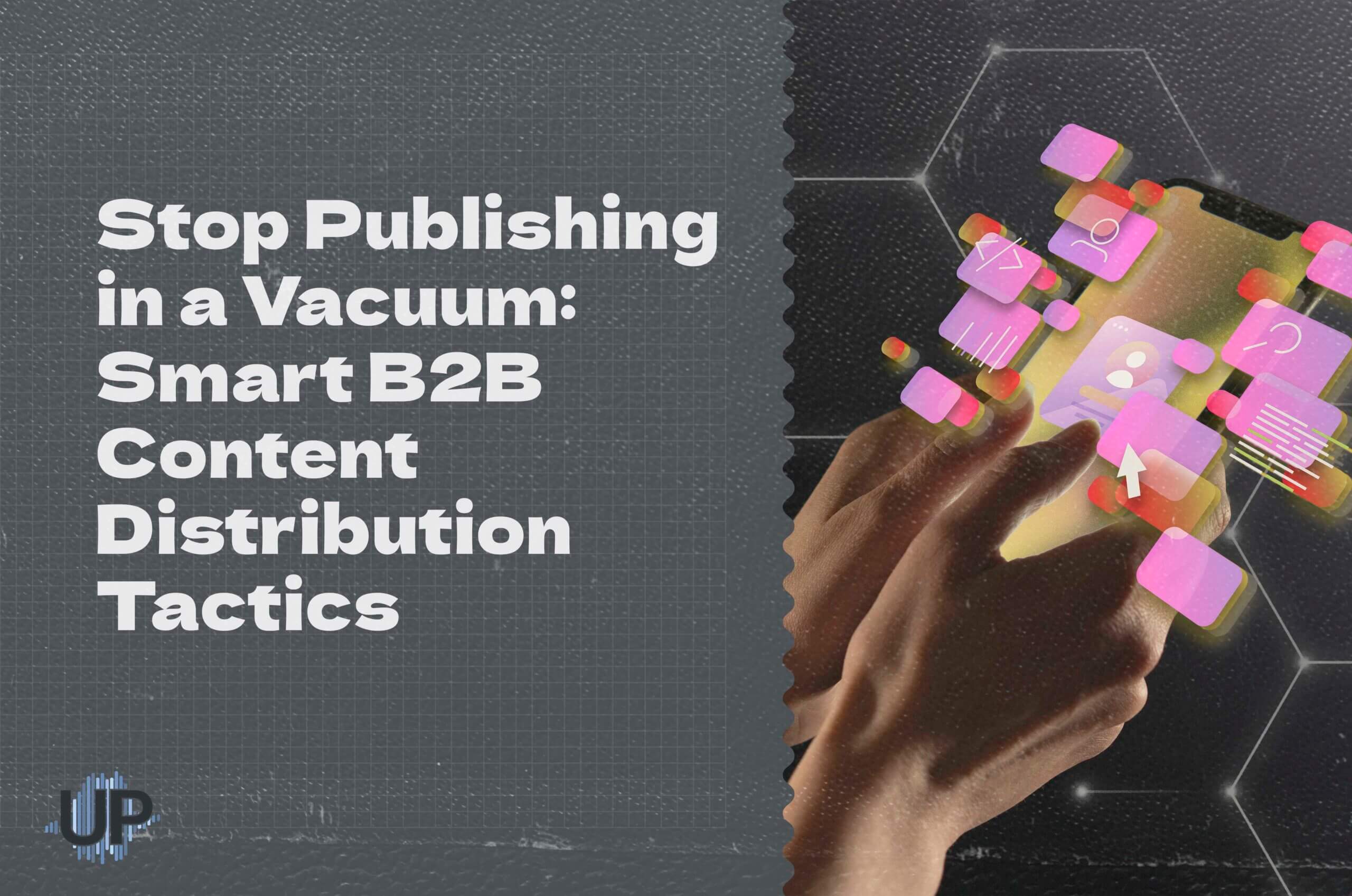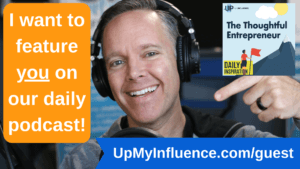
Stop Publishing in a Vacuum: Smart B2B Content Distribution Tactics
In today’s fast-paced B2B marketing landscape, creating high-quality content is no longer enough to guarantee success. The real challenge lies in how well that content is distributed. Far too many businesses continue to publish content in a vacuum, assuming that great ideas will naturally reach the right audience. However, this approach is no longer sufficient. In 2025, content distribution has become just as important as content creation itself. Smart distribution strategies can significantly amplify the impact of your content, ensuring that it reaches the right people at the right time, driving more engagement, and ultimately, generating leads and conversions. From leveraging multi-channel distribution to engaging with niche communities and influencer partnerships, there are numerous ways to strategically distribute content in today’s digital world. This article will explore these effective distribution tactics, providing actionable insights for marketers looking to maximize the reach and influence of their B2B content.
Understanding B2B Content Distribution
B2B content distribution refers to the strategic process of delivering content to the right audience through the most effective channels. While content creation focuses on producing valuable and relevant material, distribution ensures that this content reaches the intended decision-makers. It’s the critical next step that connects your message with the right audience at the right time. Without proper distribution, even the most insightful articles, case studies, or blog posts may never gain traction. For instance, a company that creates insightful whitepapers for tech industry leaders but fails to share them via LinkedIn groups or industry forums will miss opportunities to engage with potential clients. On the other hand, smart distribution—whether through email newsletters, social media platforms, or strategic partnerships with influencers—can greatly enhance visibility and brand awareness. In today’s competitive B2B environment, effective content distribution plays a key role in driving leads, nurturing relationships, and ultimately contributing to business growth.
Top B2B Content Distribution Strategies That Work in 2025
In 2025, B2B content distribution requires a blend of innovative approaches and well-established tactics to ensure maximum reach and impact. One of the most effective strategies is multi-channel distribution, which involves sharing content across a variety of platforms such as LinkedIn, industry-specific forums, email newsletters, and podcasts. This broadens the audience base and ensures that the content reaches different segments at various touchpoints. For instance, repurposing a long-form blog post into bite-sized social media posts or a video series can increase engagement and attract different types of users. Collaborating with industry influencers and thought leaders to amplify content also plays a crucial role in reaching new, highly relevant audiences. Another strategy gaining traction is using AI-driven personalization to deliver content that speaks directly to the needs and pain points of specific prospects, ensuring higher conversion rates and deeper engagement.
Social Media Mastery
To truly master B2B content distribution in 2025, selecting the right social media platforms and engaging consistently with your audience is crucial. LinkedIn remains one of the most effective platforms for B2B marketing, allowing you to connect with decision-makers, share valuable content, and build thought leadership. For instance, LinkedIn Groups can be a goldmine for finding niche communities that align with your target audience, enabling you to join conversations, share expertise, and showcase your company’s strengths. Similarly, Twitter is invaluable for real-time engagement and trending conversations within specific industries. Engaging actively on niche forums—whether they’re industry-specific communities or professional groups—can also help position your brand as a trusted resource. Consistent posting, responding to comments, and engaging in relevant discussions will help elevate your content visibility and ensure your brand remains top of mind. For more on using Facebook effectively in B2B marketing, check out this article: Personal Facebook for B2B Marketing.
Power of Email Marketing
In 2025, email marketing continues to be an essential strategy for B2B content distribution, thanks to its ability to deliver personalized, direct communication with potential clients. The first step to leveraging email effectively is building segmented lists that allow you to tailor your messages. Whether by industry, company size, or buyer persona, segmenting ensures that each email resonates with its intended recipient. To boost engagement, craft emails that are not only informative but also compelling—whether it’s an exclusive industry report, a special offer, or an invitation to a webinar, every email should provide value to the reader. Furthermore, automation tools and drip campaigns allow you to nurture leads with minimal effort, sending a series of relevant emails at the right times to keep prospects engaged and guide them through the decision-making process. This seamless automation helps foster relationships, build trust, and ultimately, drive conversions.
Influencer Marketing Impact
Influencer marketing has proven to be a game-changer in B2B content distribution, particularly in 2025, where authenticity and credibility are paramount. Identifying influential figures within your industry is the first step—these are thought leaders, industry experts, or even respected peers who hold the attention of your target audience. Once you’ve identified the right influencers, establishing mutually beneficial collaborations becomes key. Whether it’s co-authoring content, hosting joint webinars, or having influencers share your resources, these partnerships can significantly increase your reach and authority. The key to success lies in building authentic relationships that are grounded in trust. By working with influencers whose values align with your brand, you not only amplify your message but also bolster your credibility, as the endorsement from a trusted figure can resonate deeply with your audience and drive higher engagement.
Strategic Paid Advertising
Paid advertising remains a powerful tool in B2B content distribution in 2025, allowing businesses to scale their reach quickly and effectively. Creating high-performing PPC campaigns on platforms like LinkedIn and Google Ads requires a clear understanding of your audience and their behavior. On LinkedIn, you can target specific job titles, industries, and even seniority levels, ensuring that your content reaches the right professionals. Google Ads helps you capture potential leads when they actively search for solutions like yours. Incorporating retargeting strategies is essential for maximizing conversions—by reminding users who’ve already visited your site or interacted with your content, you keep your brand top-of-mind and encourage them to take the next step. To continually improve your campaigns, it’s important to analyze ad performance, tweak your targeting, and test different creatives to refine your approach. For more on optimizing paid advertising strategies for B2B, explore this article: B2B Demand Generation Strategies.
Maximizing Reach through Guest Posting
Guest posting is an effective strategy for maximizing the reach of your B2B content, particularly in 2025, as it allows you to tap into established audiences and boost your brand’s authority. Targeting authoritative industry blogs and publications that already have a loyal following can significantly expand your content’s visibility. When writing guest posts, it’s essential to focus on crafting high-quality, SEO-driven content that provides real value to readers while strategically incorporating relevant keywords to enhance discoverability. By contributing insightful articles or case studies, you position your brand as a thought leader in your field. In addition to increasing brand visibility, guest posting fosters credibility by aligning your name with well-respected publications in your industry, thereby strengthening trust with your target audience. Whether it’s through thought-provoking articles or expert advice, guest posting provides a powerful platform to grow your influence and attract potential clients.
Efficient Content Repurposing
Content repurposing is an invaluable strategy in 2025 for B2B marketers looking to maximize their content's impact without constantly creating new material. By converting existing blog posts, whitepapers, or webinars into multiple formats such as videos, infographics, or podcasts, you can engage your audience across different platforms and increase the lifespan of your content. For instance, turning a detailed blog post into a concise video summary for LinkedIn, or repurposing a podcast episode into a shareable infographic, ensures that your message reaches a broader and more diverse audience. The primary benefit of repurposing content is that it extends your reach while deepening engagement by meeting your audience where they are, whether that’s on YouTube, Instagram, or a podcast platform. To make this process easier, tools like Lumen5 for video creation, Piktochart for infographics, and Anchor for podcasting streamline the workflow, allowing for seamless repurposing with minimal time investment.
Podcasting as a Scalable Distribution Channel
Podcasting is an increasingly powerful distribution channel for B2B marketers in 2025, providing a scalable way to engage with your target audience. By hosting niche-focused conversations with industry experts, thought leaders, and influencers, you can attract a highly relevant audience eager to hear insights that align with their interests and needs. A well-executed podcast can then be repurposed into various formats, such as blog posts, video clips for social media, and bite-sized content to share across platforms like LinkedIn and Twitter. Utilizing podcast platforms like Spotify, Apple Podcasts, and YouTube allows you to reach listeners across multiple touchpoints, expanding your content's visibility. Furthermore, collaborating with influential guests enables you to tap into their networks, amplifying your reach even further. If you’re ready to take your B2B content distribution to the next level, start leveraging the full potential of podcasting today to expand your audience and grow your brand.
Key Components of a Successful B2B Content Strategy
A successful B2B content strategy goes beyond simply creating great content; it requires a deep understanding of your audience, coordinated distribution efforts, and continuous optimization. The first component is audience segmentation and persona alignment. By understanding the specific needs, challenges, and behaviors of your target personas, you can craft content that speaks directly to them, ensuring greater relevance and engagement. Next, multichannel distribution coordination is key—your content should not just live on your website; it should be strategically shared across various platforms like LinkedIn, email, and industry blogs to ensure maximum visibility. Finally, integrating analytics and continuous feedback loops allows you to assess performance, identify areas for improvement, and fine-tune your strategy. For example, if a particular content piece resonates well on LinkedIn but not on Twitter, you can pivot and optimize your approach for each platform, enhancing your overall content strategy. These key components work together to ensure your content reaches the right people at the right time, driving both awareness and conversions.
Common Mistakes and How to Avoid Them
One of the most common mistakes in B2B content distribution is overlooking audience insights and feedback. Without fully understanding your audience's needs, preferences, and pain points, your content risks missing the mark. It’s essential to gather and analyze feedback consistently, whether through surveys, social media interactions, or direct responses to your content. Another pitfall is inadequate tracking of analytics. Without proper tracking tools, you can’t effectively measure the success of your distribution efforts or identify areas for improvement. It’s important to regularly monitor performance across all platforms, adjusting your strategy based on real-time data. A third mistake is misalignment between content format and distribution channel. For example, posting long-form articles on Instagram may not yield the desired engagement, as the platform favors more visual content. Finally, neglecting consistency and frequency can severely limit your content’s impact. Regularly publishing and maintaining a consistent presence on your chosen platforms ensures that your audience stays engaged and remembers your brand.
Conclusion
In today’s competitive B2B landscape, simply creating great content is no longer enough. The key to success lies in strategically distributing that content across the right channels, ensuring it reaches the right audience at the right time. By implementing smart distribution tactics, such as audience segmentation, multichannel coordination, and repurposing content into various formats, you can significantly enhance your brand’s visibility and authority. Remember, consistency is crucial—publishing regularly and analyzing your performance will help refine your approach for even greater impact. By avoiding common mistakes, such as ignoring audience feedback or neglecting analytics, and continuously optimizing your strategy, you can ensure your content distribution efforts yield tangible results. The world of B2B marketing is constantly evolving, but with a clear and thoughtful distribution strategy, you can break free from the content vacuum and unlock new growth opportunities for your business.
Frequently Asked Questions
When developing a smart B2B content distribution strategy, you’ll likely have a few essential questions that guide your approach. What is B2B content strategy, and how does it align with broader marketing objectives? Knowing the fundamentals of content strategy will help you design content that speaks directly to your audience’s needs. Another frequently asked question is, what types of content work best for B2B distribution? Different content formats resonate differently depending on your target audience and platform, so understanding these dynamics is key to reaching your goals. How often should you distribute content? Striking the right frequency is important to maintain audience engagement without over-saturating your channels. For those exploring broader content options, you may wonder, what is B2B content syndication, and how can it help you extend your content’s reach? Lastly, understanding the difference between owned, earned, and paid distribution in B2B marketing will help you navigate the various avenues available to you, ensuring that you are using the right mix for optimal results.
What is B2B content strategy?
B2B content strategy refers to the long-term planning and execution of content creation, distribution, and optimization to attract and engage business audiences. Unlike B2C content, which often focuses on emotional appeal and quick conversions, B2B content strategy centers around providing value-driven, informative content that addresses the specific needs, pain points, and goals of other businesses. A successful B2B content strategy involves understanding your target audience’s challenges and creating relevant content that educates, nurtures, and moves prospects through the sales funnel. For example, a software company might create detailed whitepapers and case studies to demonstrate their product’s ROI, positioning it as a valuable resource for decision-makers. By aligning content with the interests of your target persona, you build trust and establish authority, ultimately guiding potential clients toward making informed purchasing decisions.
What types of content work best for B2B distribution?
In B2B marketing, certain types of content are more effective at engaging your target audience and driving business results. Educational content such as whitepapers, research reports, and detailed guides are often favored in B2B because they provide valuable insights that business professionals seek to solve complex problems. Case studies are another powerful content type, as they offer real-world examples of how your product or service has helped similar businesses achieve their goals. Visual content like infographics and videos also work well in B2B distribution, simplifying complex ideas and making them easier to digest for busy professionals. For example, a cybersecurity firm might create an infographic summarizing key security risks and how their solution mitigates them, catching the attention of potential clients. Ultimately, the best content types for B2B distribution focus on delivering value, showcasing expertise, and addressing the specific needs of the business audience.
How often should I distribute content?
Determining how often to distribute content largely depends on your business goals, resources, and the preferences of your target audience. Consistency in content distribution is essential for maintaining a strong presence, but there’s no need to overwhelm your audience with too much content. For example, publishing blog posts twice a week or sending monthly newsletters with curated industry insights can keep your audience engaged while providing them with valuable information. It’s important to understand that the focus should be on quality and relevance rather than sheer volume. Engaging with your audience consistently through various channels, such as social media, email campaigns, and industry forums, helps you stay visible and top of mind. Repurposing content into multiple formats, like video snippets or social media posts, can ensure that your message reaches your audience without overloading them with lengthy articles or frequent posts.
What is B2B content syndication?
B2B content syndication is a strategic distribution approach that involves republishing your content on third-party platforms, such as industry websites, blogs, or content-sharing networks, to expand its reach beyond your own website. Essentially, syndicating your content allows you to tap into a broader audience by leveraging the established readership of reputable platforms. For example, if you have a well-performing blog post on your website, you can syndicate it on an industry-specific platform where business professionals are already engaged, increasing visibility and driving more traffic back to your site. Syndication not only boosts content exposure but also enhances brand credibility by associating your content with respected publications or partners. It’s a great way to amplify your message, generate more leads, and establish your authority in your field.
What’s the difference between owned, earned, and paid distribution in B2B marketing?
In B2B marketing, understanding owned, earned, and paid distribution helps you leverage various channels effectively to reach your target audience. Owned distribution refers to platforms and channels that you control entirely, such as your company website, email newsletters, and social media accounts. Content shared here reaches your existing audience and allows you to build direct relationships with them. For example, publishing a case study on your own blog or sharing an article on LinkedIn is owned distribution. Earned distribution occurs when other entities or individuals share your content without compensation, typically through media coverage, influencer mentions, or organic social shares. If a leading industry blog republishes your post or a respected thought leader endorses your work, you gain earned distribution. Lastly, paid distribution is when you pay for content placement, such as through paid ads or sponsored posts, to reach a wider audience. Each distribution type serves a different purpose, but when used together, they help ensure your content reaches the right people at the right time, driving greater brand awareness and business impact.


